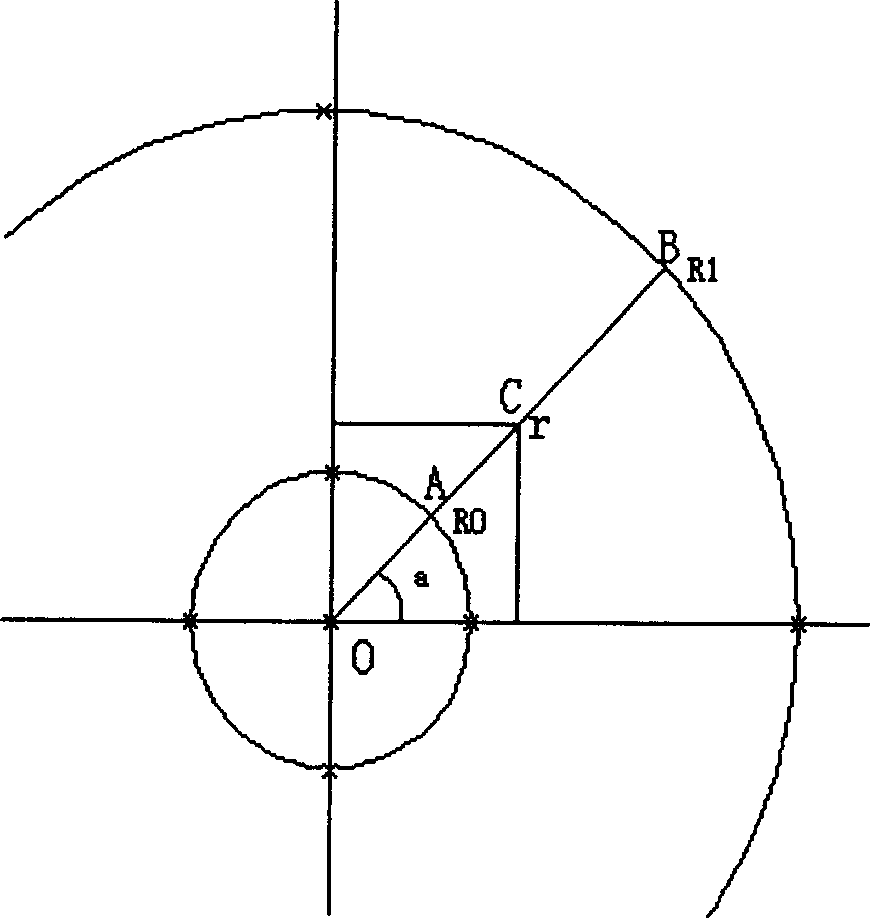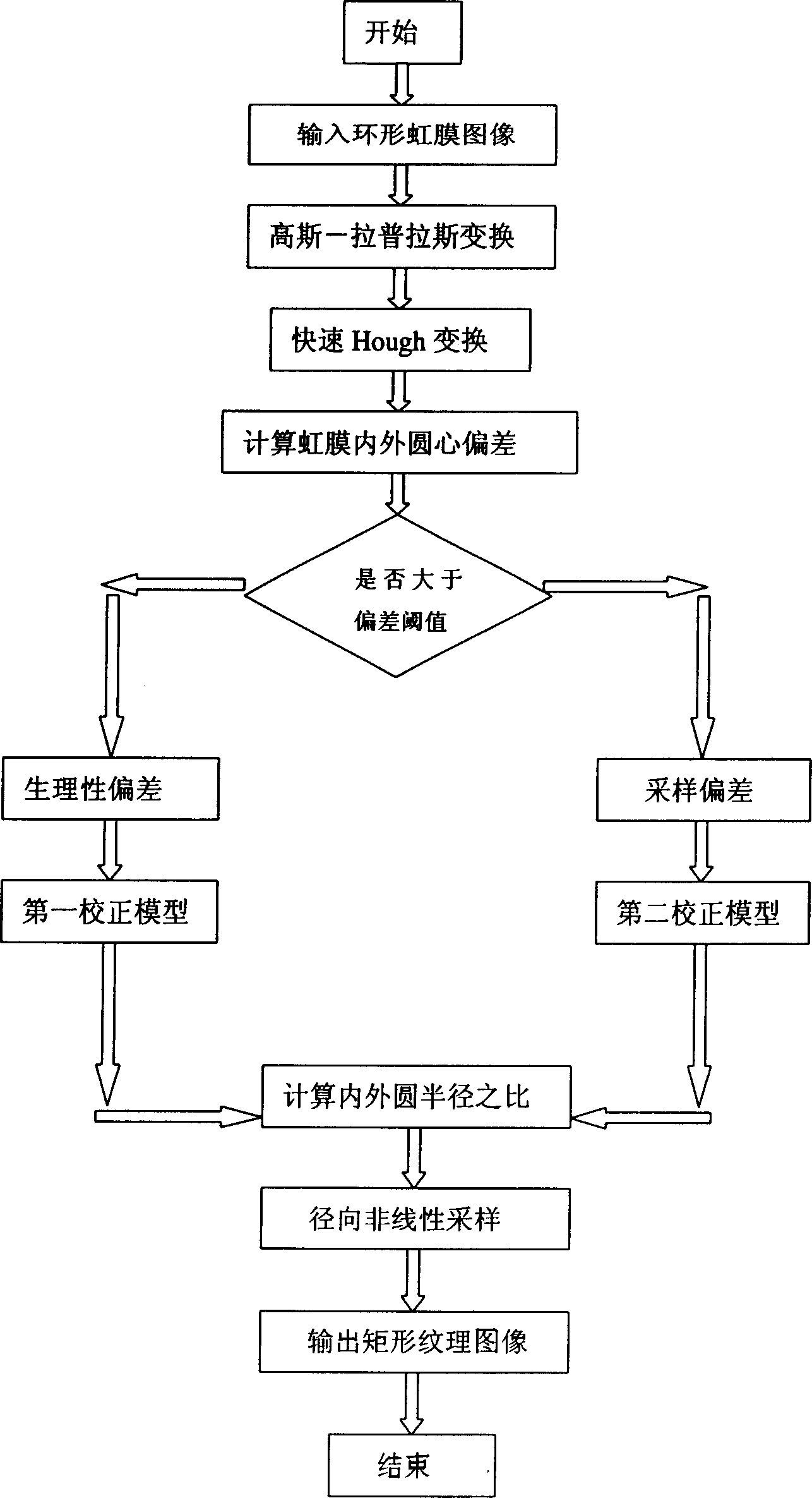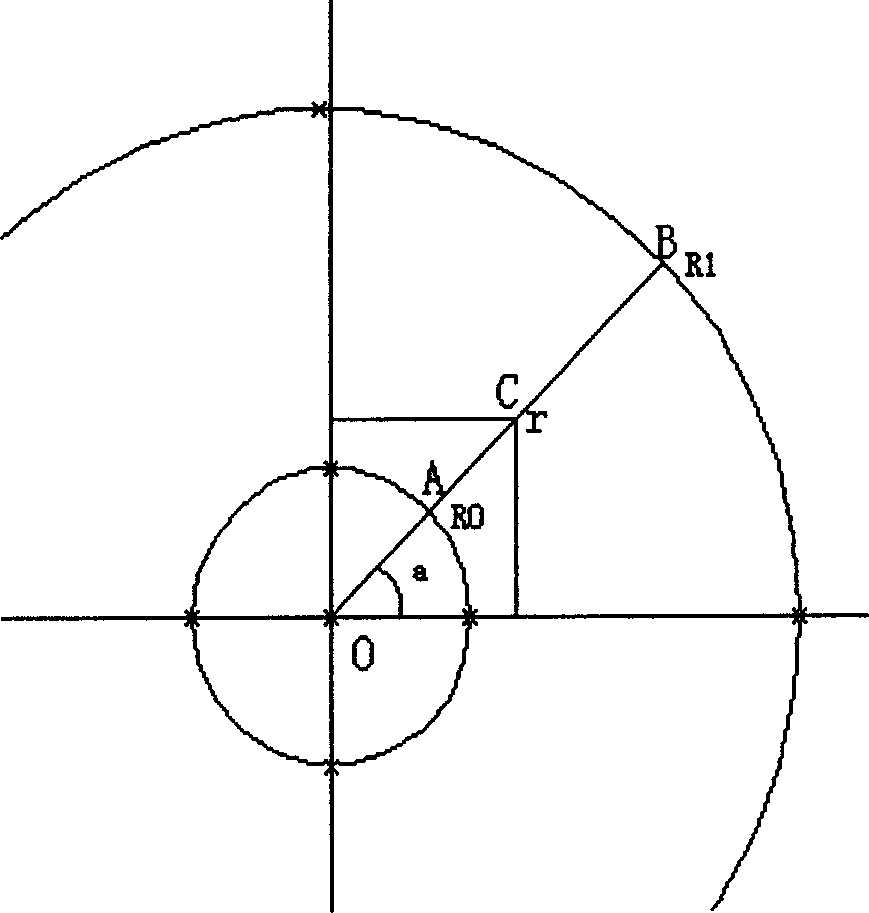Iris marking normalization process method
An iris texture and normalization technology, applied in image data processing, instrument, character and pattern recognition, etc., can solve problems such as pupil constriction and dilation are not completely uniform, center deviation, pupil and sclera area mistaken for iris area, etc.
- Summary
- Abstract
- Description
- Claims
- Application Information
AI Technical Summary
Problems solved by technology
Method used
Image
Examples
Embodiment
[0108] 1. Correction of inner and outer circle deviation
[0109] Select two iris images with large deviation between inner and outer circles for processing. Figure 7 , Figure 11 are two original iris texture images collected.
[0110] The template of the Gaussian-Laplace transform adopts the aforementioned 5×5 template.
[0111] Figure 8 with Figure 12 The edge point images obtained by Gauss-Laplace transform respectively. The inner and outer circular edges of the iris can be clearly seen from the figure. The Gaussian-Laplace transform template should be selected according to the contrast and clarity of the iris image.
[0112] Determine the priority detection area of Hough transform in the edge point image, see Figure 9 with Figure 13 As shown in the area between the two lines, the priority detection area starts from 1 / 4 of the iris image height to 3 / 4 of the image height, and the area of this area is 1 / 2 of the overall area of the image. It can be seen ...
PUM
 Login to View More
Login to View More Abstract
Description
Claims
Application Information
 Login to View More
Login to View More - R&D
- Intellectual Property
- Life Sciences
- Materials
- Tech Scout
- Unparalleled Data Quality
- Higher Quality Content
- 60% Fewer Hallucinations
Browse by: Latest US Patents, China's latest patents, Technical Efficacy Thesaurus, Application Domain, Technology Topic, Popular Technical Reports.
© 2025 PatSnap. All rights reserved.Legal|Privacy policy|Modern Slavery Act Transparency Statement|Sitemap|About US| Contact US: help@patsnap.com



